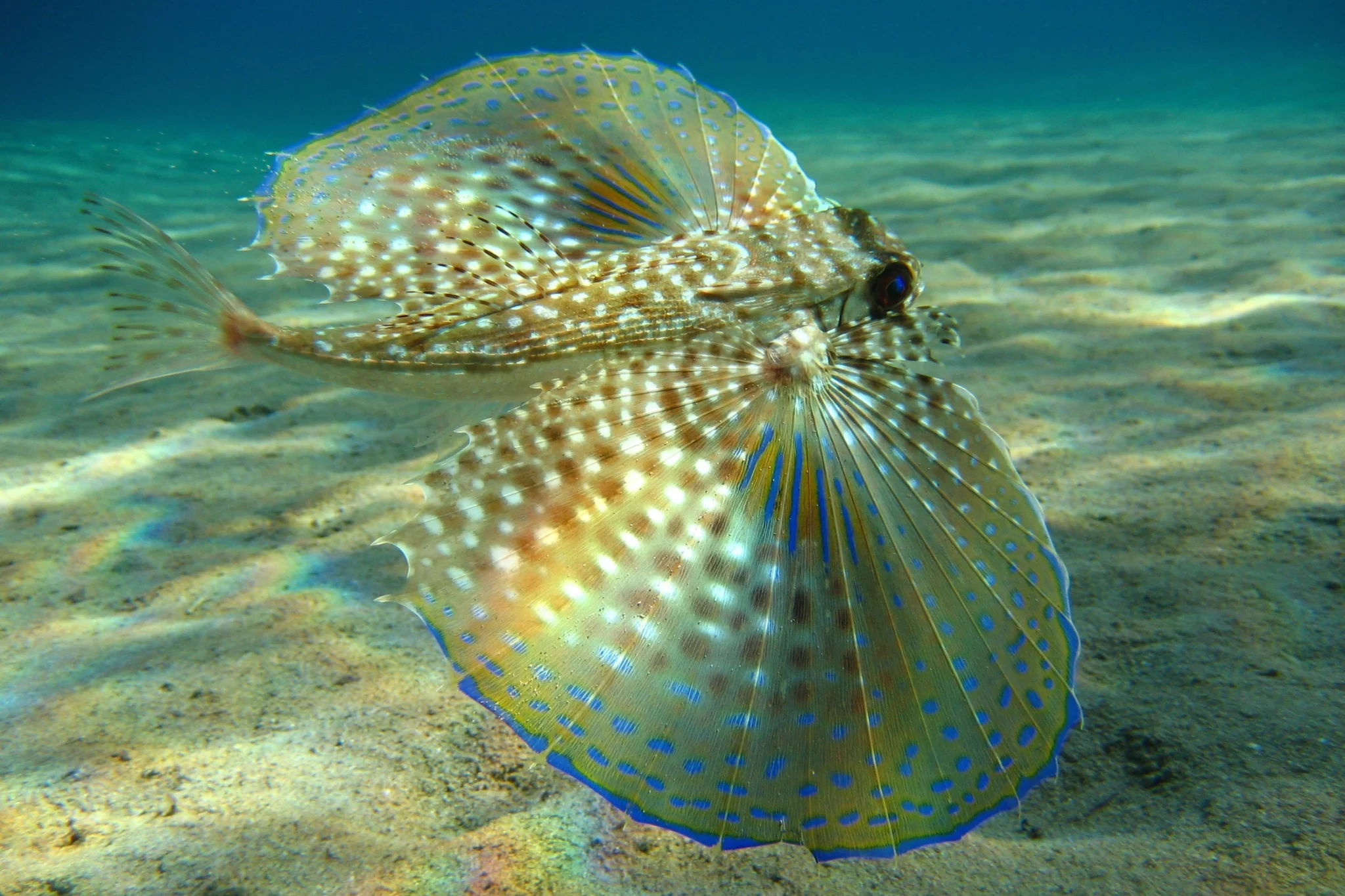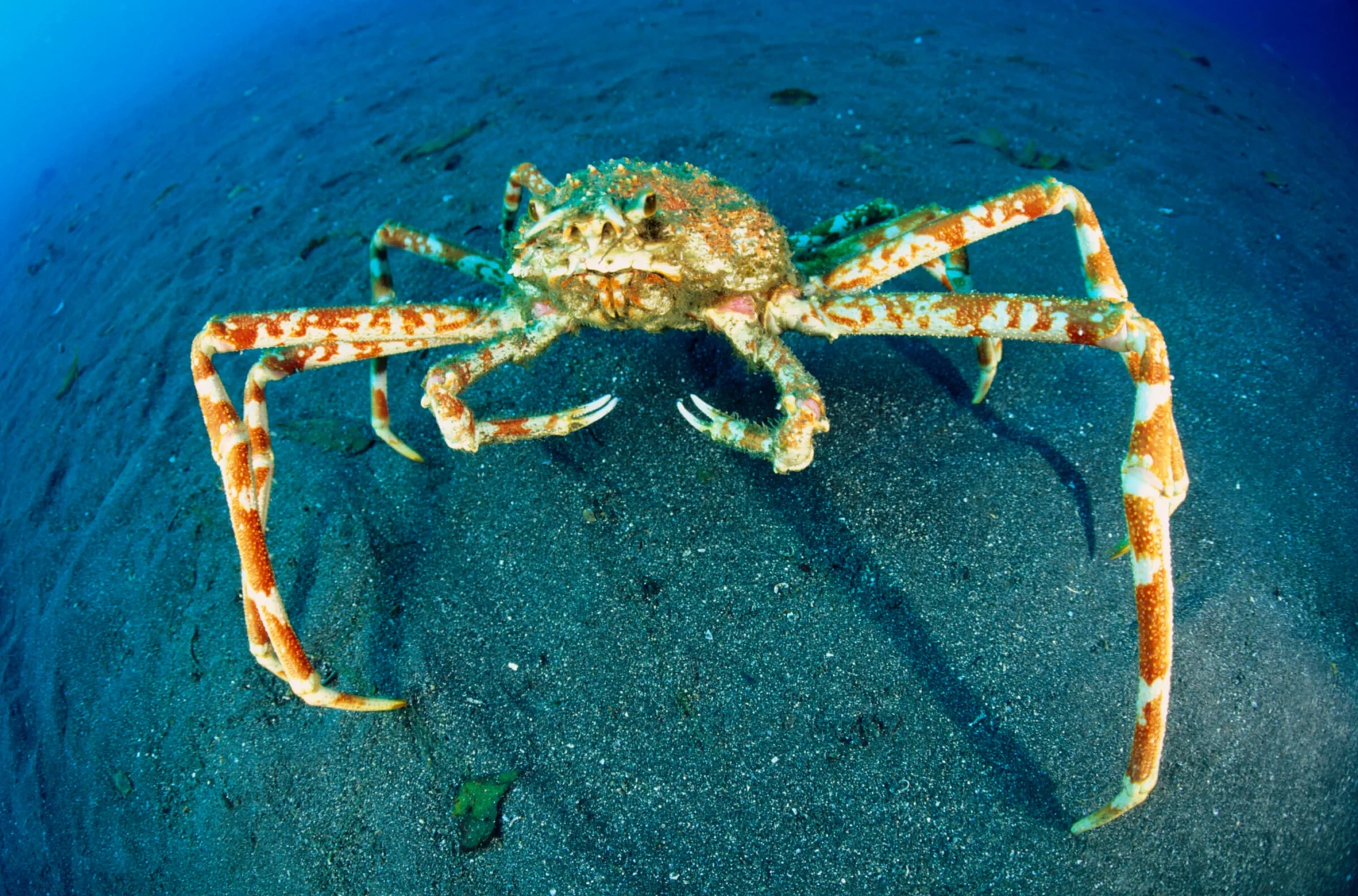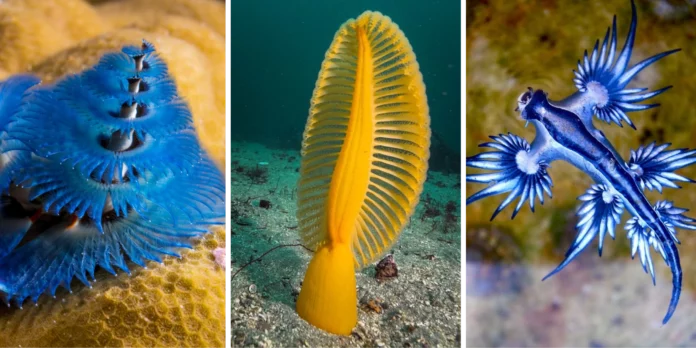Oceans are the lifeblood of our planet earth and all the creatures here. It covers 71 percent of the beautiful earth’s surface, and there are only 5 percent discovered from this watery underworld ever. The ocean is vast and holds many secrets and mysteries. They are incredible, beautiful, that filled with life.
The oceans and seas have been changing lives since early times. It is the home of more than 2.2 million known species. Underwater sea creatures are amazing but are very rarely seen. The depth of the ocean is fascinating with these amazing sea creatures. Let’s take a deep breath and dive into the magnificent sea depth.
#1. Firework Jellyfish.

The Halitrephes Massi – is a rare species of jellyfish that looks like a deep-sea firework. The jelly can find 4,000 feet underwater. They inhibit near the Revillagigedo Archipelago off Baja California Peninsula, Mexico.
Firework jellyfish can’t produce their own lights. The middle of the creature has very thin frilled tentacles and radial canals. They help to move nutrients through the jelly’s body. They form a starburst pattern that reflects the lights. What happens when the underwater vehicle lights hit that starburst pattern? The jelly turns to a vibrant appearance. It looks like a firework bursting under the water.
This gelatinous beauty usually drifts in the dark waters without the vehicle lights. When they drift in the dark, they are invisible, and it is because of their translucence. So, jellyfish don’t always appear so festive.
#2. Christmas Tree Worms.

The Christmas tree worm’s scientific name is Spirobranchus giganteus. It’s a marine worm that lives on tropical coral reefs around the world. This magical creature gets its name due to its Christmas tree-shaped crowns. All Christmas tree worms have two separate fir-shaped crowns. They stand out from their tube-like body. They use their tree-like appendages for feeding and respiration. They are small, with an average of about 3.8 centimeters in length. Once Christmas Tree Worms find a coral to live in, they don’t move much. They can live for up to 40 years, depending on the size of the coral and reef health; if threatened, Christmas tree worms respond very quickly by retracting into their tubes. These animals can be in various bright colors, including red, orange, yellow, blue, and white. They are easy to spot due to their shape, beauty, and color.
#3. Red Handfish.

The Red Handfish (Thymichthys politics) is endemic to Tasmania. They can find only in southeastern Tasmania. It’s a benthic fish. It prefers to hang around the sandy and rocky bottoms of the seafloor. They get their name from the way they used their fins like human hands. They prefer to walk with their oversized hands across the seafloor rather than swim. They are almost in bright red. They grow from about 6cm to about 13.5cm long. They are the most threatened marine fish in the world. It’s due to habitat loss and changing sea conditions. So, they have a total population of approximately 100 adults only.
#4. Leafy Seadragon.

Leafy sea dragons, Phycodurus eques is a charismatic marine fish. They are endemic to the southern coast of Australia. They get their common names from the leaf-like appendages on their entire bodies. Their nickname is “leafies”. Leafies are generally brown to yellow in body color. They are usually seen on kelp-covered rocky reefs. Their coloration and leafy appendages give them excellent camouflage on rocky reefs. So, it’s difficult for predators to find leafies in their natural habitat. They don’t use their leaf-like structures for swimming. To move, they use their very thin and transparent two fins.
#5. Sea Pen.

A sea pen is not one single animal. It’s a colony of many tiny animals called polyps. Each colony contains several types of polyps. They work together for their survival in different ways. Sea pens look like an old-fashioned feather quill pen. That’s why they called sea pens. The primary polyp becomes the stalk of the sea pen with a bulb at its base. This bulb anchors the sea pen in the muddy or sandy sea bottom if threatened; sea pens retreat into a tube under the seabed surface. If not, lie flat on the seabed until the danger disappears. Sea pens can find worldwide. They can live to be 100 years old. They produce their own light. They can glow in the dark. The animals can grow to over 1 m tall. All sea pens don’t look like a pen. Some species look more like clubs, umbrellas, or pinwheels.
#6. The Blue Dragon.

The blue dragon (Glaucus atlanticus) is a small-size blue sea slug species. They are also known as blue sea slugs, blue angels, and sea swallows. They can find temperate and tropical ocean waters worldwide. They are specific to the Atlantic, Pacific, and Indian oceans.
Blue glaucuses can swallow a little air bubble and hold it in their stomach. It allows them to float on the ocean surface. They prefer to float upside down on the ocean surface. The slugs have a bright blue underbelly and a softer silvery tone on their back. The Blue Glaucus uses its bright colors to camouflage with the ocean and sky. From above, the blue dragon blends into the color of the ocean. To anything below the surface, they blend into the color of the sky. They rarely grow larger than three centimeters long. Like other sea slug species, the blue glaucus isn’t venomous by itself. They can steal venom from their prey. They eat large, venomous prey and store prey’s stinging cells in their bodies. Then they use these venomous later against the predators. Their venom remains active—even after the blue dragon dies.
#7. The Flying Gurnard.

The flying gurnard (Dactylopterus volitans) is a marine fish. They are also known as the helmet gurnard, grunt fish, and batfish. They can find in warm and tropical oceans. The name “gurnard” comes from the French word for “grunt”. They produce growling sounds using their swim bladder and drum muscles.
Flying gurnards don’t fly. They walk with their two-small leg-like pelvic fins on the sea bottom. It has very large fan-like wings and pectoral fins. These fins are very colorful and spotted. The fish use these widespread fins to glide above the sea surface. When scared, it spreads its wings. It makes itself appear larger to threaten predators. These fins also help the fish to blend with its environment on the sea bottom reef. Due to that camouflage, they are only seen when they move.
Flying gurnards live on sand, mud, or rocks on the sandy bottom in shallower waters. They are bottom feeders, and they dig through the sand for clams, small crabs, and other small invertebrates.
#8. The Japanese spider crab.

The Japanese spider crab (Macrocheira kaempferi) is a species of marine crab. It gets its common name from its resemblance to a spider. They can find it in the Pacific Ocean around Japan. They inhabit the sandy and rocky Ocean bottoms.
The Japanese giant spider crab is one of the largest living arthropods in the world. It has the largest leg span with ten legs. They are Eight walking legs and two legs that have claws. Its body stops growing at about 15 inches, but the legs keep growing. They travel quickly over the mud on long, limber legs. The Japanese spider crab is harmless and is a slow-moving creature. It has an orange body with white spots on its legs. Male crabs are larger than females. They prefer to eat dead animals or plant matter, but they will also eat live fish. This spider crab has the longest lifespan of any crab and can live to be 100 years old!
Hope you all enjoy exploring the collection of unforgettable sea lives.

